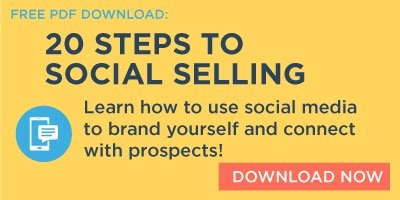
There is a plethora of research out there on why social media is such an important component of your inbound marketing, but what I want to share with you today are some specific ways to get started engaging and connecting with your social media audience. These will help you increase your B2B lead generation, and ultimately convert more customers.
1. Post original content that your target audience cares about.
One of the biggest questions we hear about social media is, “What do I post?” It’s a very important question, and the answer is ultimately the basis of whether you build a community of raving fans or… not. The most powerful content you can post is the content you create yourself—blog posts, articles, eBooks, white papers, photos, you name it. It contributes to your credibility and branding as a thought leader, and it’s also one of the most powerful ways to generate traffic to your website and blog. Starting out, it may seem like the only fans you have on your business accounts are employees and current clients (and maybe your best friend and mom too) but that’s okay! The more you share relevant and interesting content with this audience of already-loyal fans, the more they’ll share and interact with it. And that’s ultimately the goal, because you never know who they’re connected to in their social media network—it could be your next best customer! Let’s also remember that you shouldn’t be creating content just for the sake of creating content. It should be highly targeted toward your clients and prospects, providing them information they want to read—the information they search online for and ask questions about. (Hint: this is where great keyword research comes into play.) And of course it’s okay to throw in some personal insight or fun-loving posts, but these, too, should be relevant to your target audience.
2. Post curated content that your target audience cares about.
Original content shouldn’t be the only content you’re putting out into the world. Have you ever gone to a Facebook page and the ONLY posts you see are all about what they do, what they sell, and how much they want you to buy from them? Oh, and maybe the exciting post about so-and-so’s promotion to Director of Marketing or some riveting photos from their last tradeshow? I certainly have, and I immediately felt disengaged and uninterested, even if I was a loyal brand user. This is why I believe
content curation is an absolutely essential tool in developing your thought leadership and providing value to your audience.
What exactly is content curation? In the simplest terms, it’s the compilation and distribution of third party resources and information. All of us follow blogs and publications relevant to our industry, and you might even have an RSS reader you use to organize this content, so take advantage of what you’re already doing on a regular basis and pull out the articles, posts, videos, or podcasts that would also appeal to your audience. Share them on Twitter, Facebook, LinkedIn, or Google Plus—and you’ll show your readers that you do more than just create great content; you also consume and share great content. That’s powerful stuff. 3. Provide a Call-to-Action.
Just like any great blog post, your social media posts can also include a call to action. Keeping in mind that you want users to engage with your content, you should give them a way to do just that. This might be as simple as ending a post with, “If you like this post, please share it with your friends,” or “Like if you agree!” Providing links for more information is also a call-to-action, and don’t ever underestimate the power of asking a question.
The more your readers feel like you are talking directly to them (having a one-on-one conversation), the more likely they are to interact with your message. Once they share the post, it will travel on further to their colleagues, friends, and family and so on, thus expanding your reach. And that’s what it’s all about!
These are three tried-and-true ways to guarantee you’ll see more interaction and engagement, contributing to your overall inbound marketing strategy. Even more importantly, you’ll be providing value to your best customers, past clients you’ve been trying to reconnect with, current prospects, and a variety of potential customers that you don’t even know yet.

Editor's Note: This post was originally published on May 29, 2013, and has been updated.




